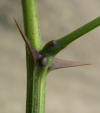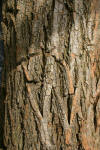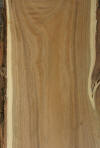WILD
FOODIES' HOME PAGE
PLANT PROFILE LIST
NAME: Black Locust
SPECIES / FAMILY: Robinia Pseudoacacia / Fabaceae
OTHER COMMON NAME(S):
CONDITIONS: full sun
|
PARTS: |
EDIBLE |
TASTE |
RAW/COOK |
SEASON |
|
All |
|
|
|
|
|
Shoots |
|
|
|
|
|
Leaves |
||||
|
Stalk/Stem |
|
|
|
|
|
Buds |
||||
|
Flowers |
|
sweet pea |
COOK |
May |
|
Fruits |
|
|
|
|
|
Pods |
|
|||
|
Seeds |
|
|
|
|
|
Nuts |
|
|
|
|
|
Roots |
|
|
|
|
|
Bark |
|
|
|
|
PORTION: small-medium
COMMENT: White flowers - cooked. A fragrant aroma, they are used in making jams and pancakes. They can also be made into a pleasant drink.(1) The entire flower portion is edible, with the pink base having the sweetest flavor. Once harvested, leave the bag open to allow the spiders you will invariably have captured to escape. Black locust flowers taste surprisingly like the sweetest of sweet spring peas, but with a floral element as well. The texture of the bases is somewhat crunchy, like celery, but without any stringiness. They are a great snack to nibble on (after you have inspected them for bugs), and they are wonderful in salads.(4) Young trees are often spiny, but mature trees often lack spines.(3)
CAUTION: All parts of the plant (except the flowers) and especially the bark, should be considered to be toxic. The toxins are destroyed by heat. Green seeds and pods are iffy edibles, so don't eat until we know more about them.(1)
NUTRITION/MEDICINAL: Protein, Minerals, Vitamins (1) Antispasmodic; Antiviral; Aromatic; Cancer; Cholagogue; Diuretic; Emetic; Emollient; Febrifuge; Laxative; Narcotic; Purgative; Tonic.(1)
LOOK-A-LIKE & RELATED: Honey Locust and Kentucky Coffee Tree
POISONOUS LOOK-A-LIKES:
OTHER USES: Dye; Essential; Fibre; Fuel; Oil; Soil stabilization; Wood.(1) Untreated black locust wood has many uses, and cut posts can even survive in the ground for over 100 years.
SOURCE LINKS (may include nutritional and medicinal info, plus other uses):
- https://pfaf.org/user/Plant.aspx?LatinName=Robinia+pseudoacacia
- http://www.eattheweeds.com/tag/black-locust (scroll down to find Black Locust flowers)
- https://en.wikipedia.org/wiki/Robinia_pseudoacacia
- http://foragedfoodie.blogspot.com/2013/05/foraging-identifying-harvesting-black.html (good photos)
- https://www.triedandsupplied.com/saucydressings/black-locust-flowers (recipes)
- http://the3foragers.blogspot.com/2011/06/black-locust-flowers.html (recipes)
- http://southernforager.blogspot.com/2013/05/black-locust-blossom-fritters-yummmmm.html (recipes)
- http://www.natureontheshelf.com/food-and-drinks/black-locust-flower-syrup.html (recipes)
- http://phytoalimurgia.com/blog/deep-fried-black-locust-blossoms (recipes)
- http://hungerandthirstforlife.blogspot.com/2013/06/pickled-peppers-stuffed-with-black.html
- https://indianapublicmedia.org/eartheats/chef-ds-white-wine-black-locust-flower-jelly.php
- https://veganonboard.com/acacia-flower-fritters-a-wild-spring-delicacy





